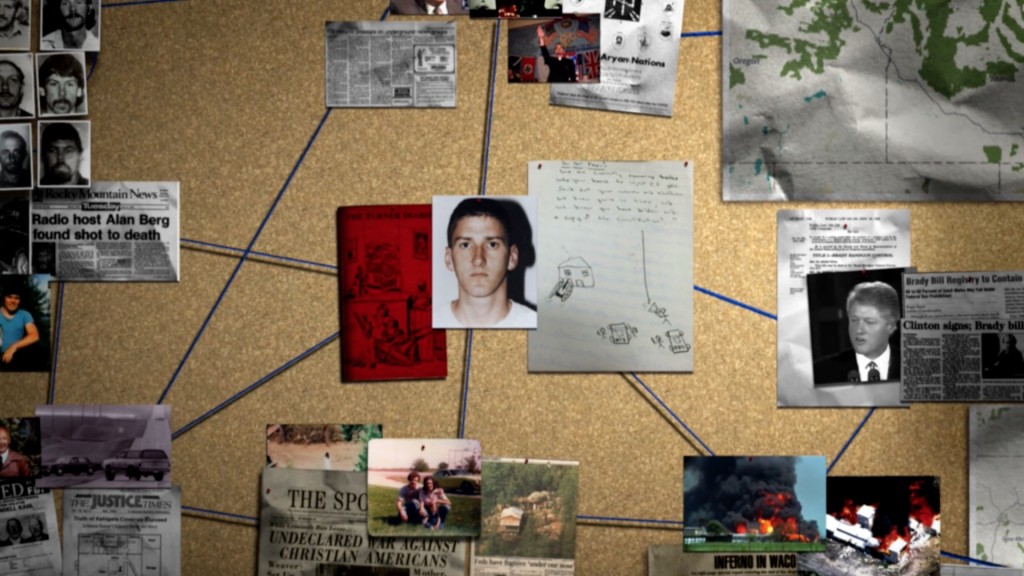 Got a chilling feeling at the PBS portion of the TV Critics Association winter press tour last month. Of course it was happening just before the inauguration, but it was surprising to see so many episodes pertaining to the extreme right. An impending “Frontline” about the Bundy’s armed takeover of federal land is unironically called “American Patriot.” And there’s two editions of “American Experience” (PBS, 9 p.m., check local listings) this month that are so even-handed in its explanations about the rise of the right you might think it a justification.
Got a chilling feeling at the PBS portion of the TV Critics Association winter press tour last month. Of course it was happening just before the inauguration, but it was surprising to see so many episodes pertaining to the extreme right. An impending “Frontline” about the Bundy’s armed takeover of federal land is unironically called “American Patriot.” And there’s two editions of “American Experience” (PBS, 9 p.m., check local listings) this month that are so even-handed in its explanations about the rise of the right you might think it a justification.
At any rate it’s odd to have two films about white supremacist groups during black history month. And both of them, by filmmaker Barak Goodman, use some of the same footage. Both tonight’s “Oklahoma City” and the forthcoming “Ruby Ridge” could play during Militia Group Movie Night without anybody throwing popcorn in anger (indeed the grown daughter of Randy Weaver gets to weep about being hunted by the government with orchestral music playing behind her; she could have felt less so had her dad cooperated with the authorities earlier).
“Oklahoma City,” which culminates in the worst case of domestic terrorism in U.S. history (and not by a Muslim!), but begins far back, to Ruby Ridge, where the Weavers were shot at by authorities, to Waco, which was also seen as government overreach, though people must have been OK with messianic cults armed to the teeth with child abuse going inside the gates of the Branch Divisions.
One key thing that happened soon after Waco was the Clinton administration’s ban on assault rifles, which sent right wingers over the deep end. It helped convince Timothy McVeigh to take action he read in a bad novel called “The Turner Diaries,” written by a neo-Nazi.
Of course, all of this is fascinating and important these days when the White House is being run by a guy whose website catered to white nationalists. And they were likely in production long before Trump got in the White House.
But the abundance of these films at one time, on a network where coverage was usually reliably sane (and hence blamed for being liberal) still causes a chill.
For his part, series producer Mark Samels bristled at my notion that it was weird to show both of them during Black History Month.
“I don’t agree at all that it’s weird,” he said. “I think Black History Month is very much at the foundation of these stories. A lot that’s going on in both stories has to deal with white separatists, white supremacists, white nationalism. And I think that’s a backdrop to the great victories and achievements of African Americans throughout history, so I think it’s entirely suitable.
“History is a contested dynamic, often very conflict ridden enterprise,” Samels said. “Has been from the beginning and still is. It’s not simply just plaques on the wall. And I don’t think that this is movie night at the Aryan Nation’s compound either. I think if you see the films all the way through, you’ll see that Sara Weaver may have a very strong emotional pull on her version of events, but the FBI agents who were present at both Ruby Ridge and Oklahoma City have a very strong case to be made too about when you sit out there for the many, many months that they were waiting to try to bring Randy Weaver down on a charge of sawing off shotguns and nothing was getting done and he was armed up there and there were kids up there — they have a strong position to make. And I think it’s fodder for both sides to contemplate how far are we willing to tolerate the definition of civil liberties by individuals in a society.”
Filmmaker Goodman added that “it’s possible to be hard on the federal government or at least critical of the federal government’s response, especially at Ruby Ridge, maybe to some degree at Waco, and at the same time hold responsible this movement for what happened at Oklahoma City.
“We can hold both ideas in our heads at the same time,” he said. “In many ways, this film is about that. It’s about conspiracy thinking. It’s about how each side viewed the other inflated sort of dangerous terms. And so perhaps you’re reacting to the fact that we are somewhat critical, I think it’s fair to say particularly at Ruby Ridge, of the response of the federal government. But again, that doesn’t in any way diminish our very hard look at this movement and what this movement was responsible for.”